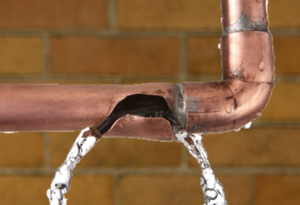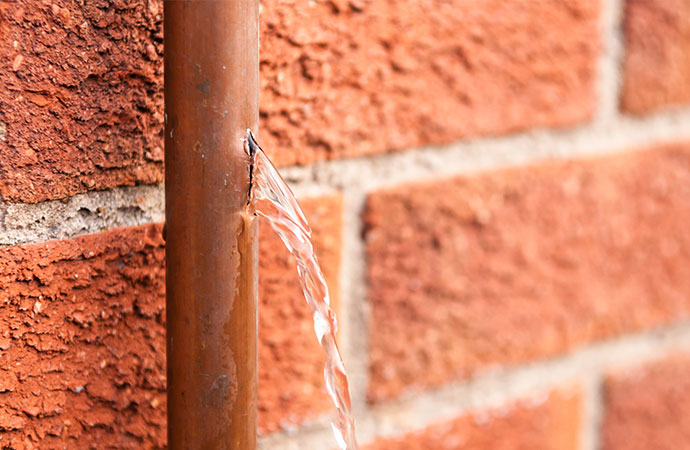Stop the Flood: Strategies for Identifying and Dealing With Ruptured Pipes
Stop the Flood: Strategies for Identifying and Dealing With Ruptured Pipes
Blog Article
Do you find yourself trying to locate know-how about How to Prepare for Your Dishwasher Installation?

A burst pipeline is a major emergency; you can just stand as you watch water you pay very much to rejoin with the earth. In even worse cases, you discover a swimming pool on your kitchen area flooring, which is a fantastic journey risk, specifically if you have children around. If the pipe that ruptured was in your wall surfaces, bad news: you may require to repaint that whole area.
Just how can a disaster like a burst pipeline be stopped and handled? Well, by listening to your specialist emergency plumbers as well as complying with these rules.
How do I know when my pipes have burst?
Rising and fall water stress
Pipelines do not simply burst in a day. You might have noticed that your cooking area tap or shower does not run quickly when you transform the faucet. It may stop for a couple of secs and after that blast you with even more pressure than common.
In various other instances, the water may seem normal initially, after that decrease in pressure after a couple of secs.
Wet walls and water discolorations
Prior to a pipe bursts, it will certainly leak, most times. If this relentless leaking goes unnoticed, the leak might finish right into a large tear in your pipe. One easy way to avoid this emergency is to look out for wet walls advertisement water stains. These water stains will certainly lead you right to the leakage.
Puddles under pipelines and sinks
When a pipeline ruptureds, the outflow forms a puddle. It might show up that the puddle is growing in size, and also regardless of the number of times you mop the pool, in a couple of minutes, there's another one waiting to be cleaned. Often, you might not have the ability to trace the pool to any noticeable pipelines. This is an indication to call a professional plumber.
Untraceable trickling sounds
Pipe ruptureds can occur in the most undesirable locations, like within concrete, inside walls, or under sinks. When the house goes silent, you might have the ability to listen to an irritatingly persistent dripping noise. Also after you've checked your shower head and also kitchen faucet, the leaking might continue.
Precious viewers, the trickling might be coming from a pipe inside your walls. There isn't much you can do regarding that, except tell an expert plumber.
Turn off the Water
When water ices up, it broadens in quantity by concerning 9 percent. And it broadens with significant pressure: The stress inside pipes may go from 40 pounds per square inch to 40,000 psi! No pipe can hold that much pressure, so it breaks open. The break may happen where the ice kinds, however regularly, it occurs where water pressure locates a weak point in the pipeline. That may be inches or even feet from the frozen area. Find the water shutoff valve as well as turn off the water to avoid even more damage. You may also require to shut down the electrical power also, relying on where the leakages occurs as well as just how large it is.
Polluted water
Lots of people think a ruptured pipe is a one-way outlet. Fairly the contrary. As water spurts of the hole or laceration in your plumbing system, pollutants find their method.
Your water might be polluted from the source, so if you can, inspect if your water tank has any troubles. Nevertheless, if your drinking water is provided as well as cleansed by the city government, you need to call your plumber promptly if you see or smell anything amusing in your water.
What do I do when I identify a ruptured pipeline?
Your water meter will remain to run also while your water wastes. To minimize your losses, locate the primary controls and transform the supply off. The water mains are an above-ground structure beside your home.
How to Fix & Detect a Leaking Pipe
How Do I Know if a Pipe is Leaking?
Leak detection tests can help you determine if your pipe has a leak. Even if you don’t see an apparent leak, you should still conduct leak detection tests regularly to save water and money—and prevent major damage to your home.
Water meter. It can be helpful to figure out what your usual water meter usage numbers are and then monitor them regularly. To monitor your meter, first, turn off all water faucets in your home. Check the meter and write down the numbers. In a few hours, check the meter again. If the numbers have changed, you have a leak. Water gauge. Use a water gauge to test your water pressure. Your showerhead should produce a certain amount of water pressure based on its model and design. If the pressure is lower than it is supposed to be for that specific showerhead, your home likely has a leak. Puddles. Look inside your bathroom, laundry, and kitchen sink cabinets. Puddles around the cabinets or around toilets, tubs, showers, and washing machines indicate the presence of a leaking pipe. You may also notice loose tiles, peeling or flaking paint, or mold caused by water accumulation. Napkin test. Even if you don’t see any puddles, you may still have a leak. You can test for water leaks in the bathroom, laundry, and kitchen by wiping below-sink connections with a napkin, paper towel, or piece of toilet paper. If it becomes damp, you probably have a leaking pipe under the sink. Discolored walls. Walls that are discolored—usually with brown or yellow stains—or bulging might mean that they have been impacted by water damage caused by a leaking pipe. Smell. A leaky pipe will create sitting water, and over time, that water may develop a musty smell. If your home smells musty, but you can’t locate the source, it may be due to a leak. Steps for Fixing a Leaking Pipe
A leaky drain can be remedied by tightening the pipe base, replacing the drain seal, caulking the rim, and tightening the pipe nut. Similarly, a leaking toilet pipe can be treated by tightening the packing nut. You may also need to replace the valve. A leaky faucet may just need tightening or replacement of the washers. If that doesn’t work, consider replacing your faucet. If your pipe has a hole in it, you may want to use a pipe leak sealer or pipe leak tape. This quick fix for water pipe leaks can also temporarily fix a copper pipe leak. https://www.ahs.com/home-matters/quick-tips/how-to-tell-if-pipes-are-leaking/

Hopefully you liked our excerpt about How to Prepare for Your Dishwasher Installation. Thanks a ton for finding the time to read through our content. Make sure you take a moment to distribute this entry if you appreciated it. Bless you for your time. Don't hesitate to stop by our blog back soon.
Set Up An Appointment
Report this page